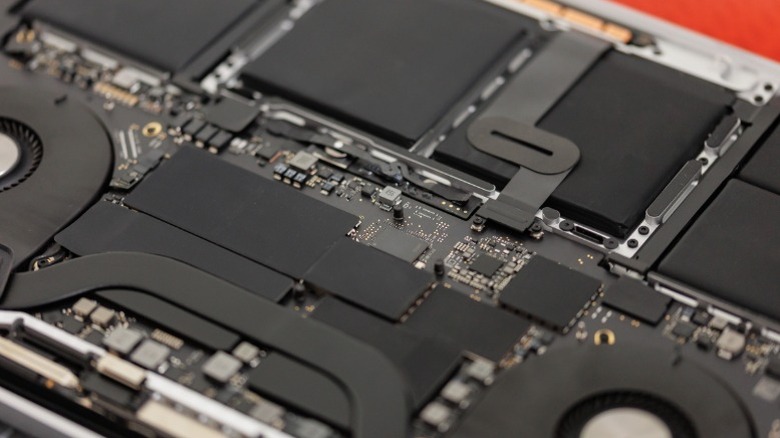Why You Might Want To Avoid Buying A Base Model MacBook
Apple's MacBook range of laptops might not be easy recommendations in the budget segment, but they still deliver on the price-to-performance metric consistently. Apple's shift to in-house M-series chips for its MacBooks has re-established Apple as one of the most reliable laptop vendors in the recent past.
MacBooks are known for their sleek, portable design, but are also known for their performance. Being as efficient as they are, you will notice no difference in performance regardless of whether you're connected to a power source. The M chips' tight integration between internal components is also why MacBooks can make do with significantly less RAM than their Windows counterparts.
Although Apple has upped the minimum amount of RAM in the base model MacBooks to 16GB, you can still pick up older generations of MacBooks that feature 8GB of RAM from third-party retailers. Workflows involving 4K video editing or dealing with virtual environments during development will demand a lot more RAM than what the base model MacBooks offer. Even Google Chrome is a notorious memory hog, making 8GB MacBooks an even harder sell. In all but the most basic use cases, like web browsing, you really should avoid picking up a base-level MacBook with just 8GB of RAM. You will also need to factor in the measly 256GB SSD that they ship with: Unless most of your work is in the cloud, you will very quickly run out of this storage.
MacBooks aren't user upgradable
You may have heard of people swapping out hard drives for SSDs and installing more RAM into their old laptops. Sadly, that isn't possible with MacBooks (and even certain newer Windows laptops). One of the most important things to know before you buy a MacBook is the fact that these laptops are not user-upgradable in any sense. The only time you can customize the specs of your MacBook is while placing an order. After that, you're stuck with the same configuration.
All Macs with Apple's M-series silicon use what's called "Unified Memory," which refers to how the CPU, GPU, and Neural Engine all draw from a shared pool of memory. While this brings massive gains in speed and efficiency, running graphically intensive tasks when your GPU doesn't have dedicated memory can be a strenuous chore for your machine.
Aim for at least 16GB of RAM when shopping for a MacBook. This will ensure you don't run into instances where web pages begin to reload and your Mac starts depending on its SSD for swap memory. The storage part of the equation is a bit more flexible, and some may do just fine with the base 256GB variant. It's even more of a non-issue if your workflow is largely browser-based and if you've already switched to cloud storage for ease of use and quick access across devices.
How much RAM and storage do you need?
Though more physical memory on a device will always take you further, Apple laptops allegedly have better memory management and a faster SSD swap than Windows PCs, allowing them to get by with 8GB of RAM. Apple's control over both the hardware and software inside a Mac is what makes this happen. However, in 2025, treating 16GB of RAM as the bare minimum is a good start — and Apple acknowledges this, too. This is one of the biggest differences between the MacBook Air M4 versus its previous generations.
The MacBook Air M3 launched in 2024 with a base configuration of 8GB RAM and 256GB storage. Apple then quietly bumped the base tier to 16GB of RAM a few months later while maintaining the same pricing. This was likely done to better accommodate all of the Apple Intelligence features that the company has been advertising lately.
If you are a creative professional, programmer, or game developer, you might need more than 16GB of RAM and 256GB of storage space. Since the MacBook Air maxes out at 32GB of RAM and 2TB of storage, you might want to consider the MacBook Pro with its considerably beefier performance, better screen, and a slightly longer-lasting battery. Currently, the highest-end MacBook Pro can be speced out with up to 128GB of unified memory and 8TB of SSD storage — though the upgrades don't come cheap.


